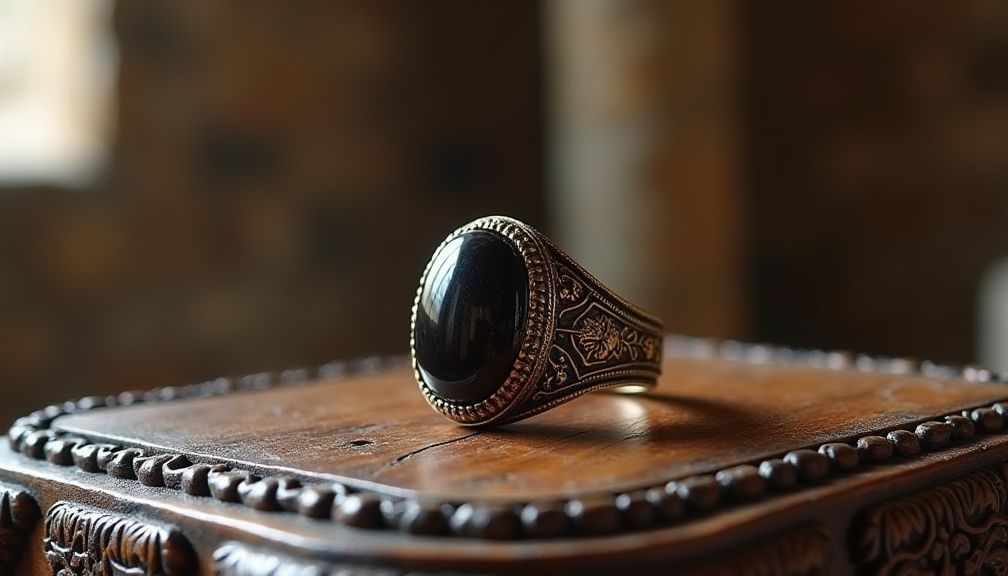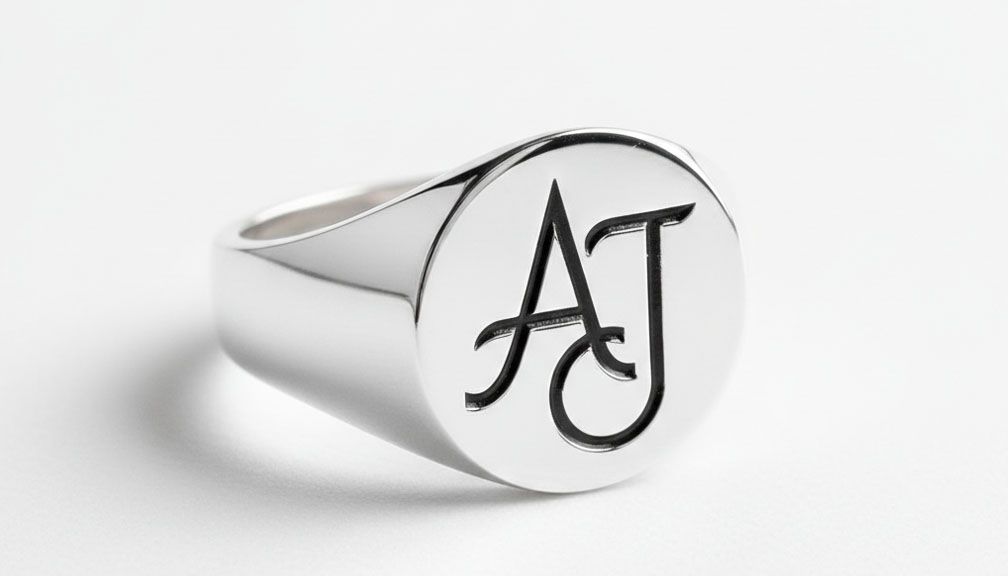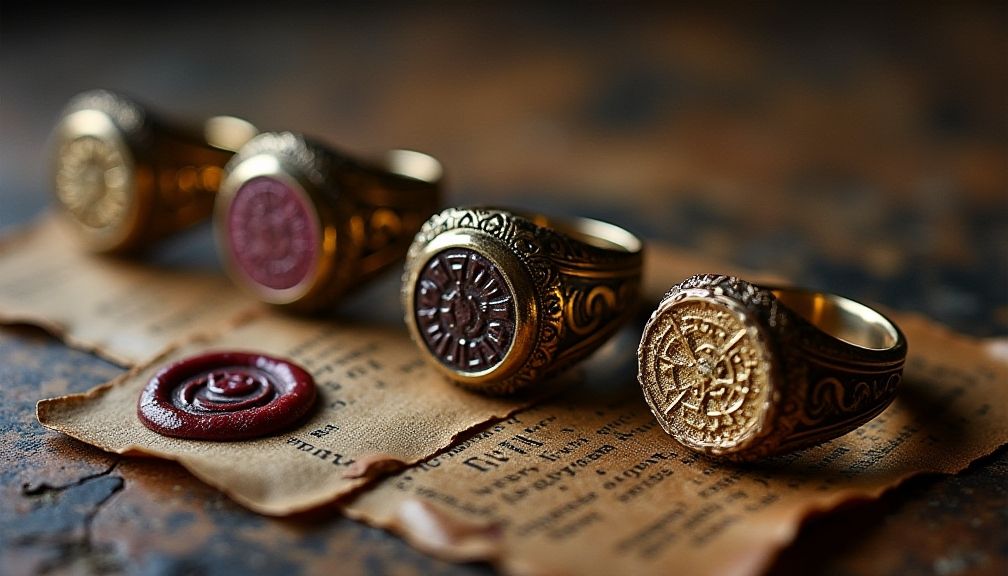Signet rings, often adorned with intricate designs and personalized engravings, have a rich history that stretches back thousands of years. These unique pieces of jewelry, which serve both decorative and functional purposes, were originally utilized as seals to authenticate documents. The origins of signet rings can be traced to ancient civilizations, and understanding their evolution provides insight into cultural practices, societal structures, and personal identities. In this blog post, we will explore the intriguing history of signet rings, their significance across different cultures, and their modern resurgence in popularity.
The Ancient Beginnings of Signet Rings
The history of signet rings dates back to approximately 3500 BCE in ancient Mesopotamia. Archaeological evidence suggests that these rings were first used by the Sumerians, who created cylinder seals that would leave an imprint when rolled onto clay tablets. These seals often featured intricate designs, including depictions of deities and animals, conveying not only ownership but also prestige.
As civilizations advanced, the use of signet rings became more widespread. The Egyptians, for instance, adopted signet rings as emblems of authority. Pharaohs and high-ranking officials would wear rings engraved with hieroglyphs and symbols, signifying their power and divine right to rule. The act of sealing documents with one’s signet ring became an essential practice in ensuring the authenticity of important texts.

Signet Rings in Ancient Rome
The Roman Empire played a significant role in the evolution of signet rings. By the 1st century BCE, signet rings had become fashionable among the Roman elite. These rings were often made from precious metals such as gold and silver, and they featured intaglio carvings—an engraving technique that creates a design in relief. Romans utilized signet rings not just for sealing letters but also as status symbols, showcasing their wealth and societal position.
Interestingly, the Roman practice of using signet rings extended to women. Although traditionally associated with men, women of high status wore ornate signet rings adorned with their family crests or personal emblems, allowing them to assert their identity and influence within society.
The Middle Ages: A Signet Ring Revival
As Europe transitioned into the Middle Ages, the relevance of signet rings continued to flourish. During this period, they transformed into essential tools for medieval nobility and royalty. The rings were often large, impressive, and meticulously designed to reflect the wearer’s lineage or title. Embossed family crests became typical, reinforcing the significance of heraldic imagery.
In addition to their decorative appeal, medieval signet rings were used extensively in legal matters. Individuals would use their signet rings to seal letters and documents, including important treaties and royal decrees. The unique impressions made by these rings served as a guarantee of authenticity, just as they had in ancient times.
Craftsmanship and Artistry Through the Ages
The craftsmanship of signet rings has evolved along with changing artistic movements and technologies. During the Renaissance, for example, signet rings became highly coveted among the elite, featuring detailed engravings that showcased the artistic prowess of their creators. These rings were often adorned with gemstones, adding an extra layer of beauty and luxury.
In medieval and Renaissance periods, advancements in metalworking techniques allowed for more intricate designs, often embedded with colored gemstones and enameling. Jewelers would often personalize rings with specific symbols, dates, or initials, emphasizing the individual identity of the wearer.
Signet Rings in Modern Context
In contemporary society, signet rings are experiencing a revival in popularity, transcending their historical roles as mere seals for documents. They now symbolize personal style, family heritage, and individuality. Many young people are adopting signet rings as fashion statements, often engraving them with personal messages or images that hold sentimental value.
The modern interpretation of signet rings can be seen on the fingers of both men and women today, often crafted from a variety of materials including gold, silver, stainless steel, and even titanium. The versatility of these rings caters to various tastes, allowing wearers to express their identity in unique ways.
Further Reading:
Signet Rings and Family Heritage
A signet ring can also serve as a powerful connection to family heritage. Many families pass down their signet rings through generations, often creating a personal narrative tied to the ring’s history. This familial significance adds depth to the already rich story of the ring itself.
Some families engrave their coats of arms or other historic motifs onto their signet rings, turning these pieces of jewelry into cherished heirlooms. The symbolism behind these rings is not only granted through their visual appeal but is also embedded in the legacy of family traditions and shared memories.
Symbolism of Signet Rings Across Cultures
Different cultures have their own interpretations of signet rings, adding layers of meaning to this timeless accessory. In Islamic culture, for instance, signet rings are often worn with inscriptions of faith or significant religious phrases. The use of such rings highlights the blend of personal and religious identity.
In East Asian cultures, signet rings have historically been worn as markers of status and authority. They often feature designs that celebrate nature, philosophy, and spiritual beliefs. The artistry involved in creating these rings reflects the cultural values and aesthetics of the society from which they originated.

The Modern Craft of Creating Signet Rings
The art of signet ring making continues to thrive today, with artisans employing both traditional and modern techniques. While some jewelers hold fast to age-old methods of handcrafting rings, others leverage technology and design software to create intricate and personalized pieces.
3D printing has revolutionized the process of ring production, allowing for precision and customization in ways that were previously unimaginable. Many consumers now have the option to design their own rings, incorporating symbols, initials, or meaningful phrases that resonate with their personal narrative.
Conclusion: The Timeless Allure of Signet Rings
Signet rings carry a profound legacy that transcends cultures, time periods, and societal changes. From their origins in ancient Mesopotamia to their modern incarnations, these rings have remained relevant by evolving alongside human civilization. Whether as symbols of authority, expressions of personal identity, or treasured family heirlooms, signet rings encapsulate the interconnectedness of art, culture, and history.
As more individuals embrace the significance of signet rings in today’s world, it is essential to appreciate the stories and meanings these pieces of jewelry carry. The artistry and craftsmanship behind signet rings continue to inspire and intrigue, ensuring that their allure will remain timeless for generations to come.








